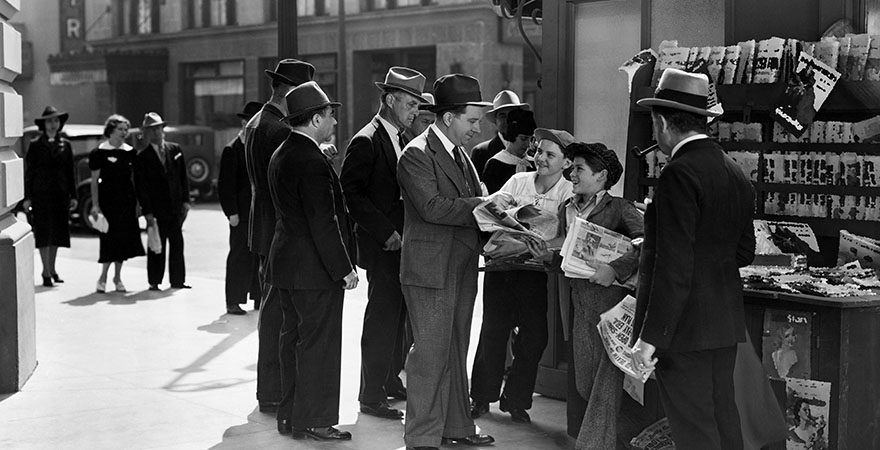History of Street Photography
In order to understand the history of street photography, it is vital to know what street photography is. Street photography is a discipline that captures everyday life in a candid manner as the subjects are strangers without knowledge of being photographed. This unawareness allows the photographer to capture and the public to see the photographed world as not being staged for camera, but seeing it in a natural way that many do not notice or take for granted.
The earliest periods of street photography coincide with the origins of photography itself. Due to the urbanization of the late 19th Century, many early photographers attempted to capture the lives of those living in these cities, so quite literally they took pictures in the streets for the birth of street photography. Earliest forms of photograph technology required long periods of time for the taking of the pictures, so street photography is a form that can have people in the image or simply photograph the location. Both people and architecture in location can present the world naturally.
One of the earliest street photographers was American photographer Alfred Stieglitz, who worked in the medium from the 19th Century to the early 20th Century. Heavily influenced by the realism movement in painting, Stieglitz’s work focused on people and architecture from New York to Paris to show the growth of a country, common life in an urban setting, and the hope and despair of people in stark, simple images. Stieglitz showed Paris in day and night by the electric lights that illuminated the nightlife of an old city given new life through technology, while also the growth of the United States in a New York City skyscraper being built and the raw power of American industry and innovation with a picture of 19th Century locomotive charging out of the rail yard. The power of Stieglitz’s photographs come from the human subjects all caught with a natural way conveying their emotions.
The photograph technology could allow street photographers to capture the details of the world in striking detail. Street photography allowed us to record the effects and changes of time, light, and the seasons on a particular point in a rapid manner in order to see the impact of changing the variables. Compared to painting, photography had the benefit of recorded moments of time with acute clarity and precision detail that could have potentially been missed in the painting process.
By the 1920s, changes in photograph technology promoted shorter exposure times for cameras giving street photographers to capture and present live action instantaneously rather than requiring subjects to remain motionless for long periods. These short exposures could catch people in action whether it be in a walking conversation or playing baseball. Coupled with these exposures, making the camera smaller presented opportunity for increased mobility. Cameras like the Leica let the photographer alter the position of the shot giving a different perspective than before. With the new technology, action could combine with a detailed composition of a position to evolve the medium of photography as photographers could move outside of the city. One of the greatest photographs in History came from these innovations. Dorothea Lange’s photo, Migrant Mother, comes from a series of photos where an American mother looking for a reprieve from the Great Depression comforts her children and looks to the horizon. The improved mobility and shorter exposure times allowed this side of America to be saved forever.
After the World Wars, street photography also managed to capture the development of the major social movements of the 20th Century as photographers specialized on sections of society such as women and African-Americans. Female subjects from the 1920s until after World War II showed the impact of women changing their dress, moving outside the home for labor, going out into the city and as a result changing their social identity. African-Americans also benefited from street photography in the Interwar years as black culture, Jazz, and important thinkers and writers gave insight into a section of the American identity that promoted the Harlem Renaissance and the development and importance of black culture. The Women’s Liberation and Civil Rights Movements emerged out of the humanity that these images conveyed.
Over the past hundred years and more, very little has contributed to the knowledge and beauty of humanity more than street photography. With a focus on realism, it has become an art form that gives us the ability to understand how we connect with our environment and each other.

